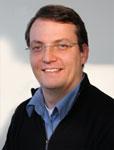Cited By
View all- Drewniok JWalter MHang Ng SWalus KWille R(2024)On-the-fly Defect-Aware Design of Circuits based on Silicon Dangling Bond Logic2024 IEEE 24th International Conference on Nanotechnology (NANO)10.1109/NANO61778.2024.10628962(30-35)Online publication date: 8-Jul-2024
- Hofmann SWalter MWille R(2024)A* is Born: Efficient and Scalable Physical Design for Field-coupled Nanocomputing2024 IEEE 24th International Conference on Nanotechnology (NANO)10.1109/NANO61778.2024.10628808(80-85)Online publication date: 8-Jul-2024
- Walter MDrewniok JHofmann SHien BWille R(2024)The Munich N anotech Toolkit (MNT)2024 IEEE 24th International Conference on Nanotechnology (NANO)10.1109/NANO61778.2024.10628747(454-459)Online publication date: 8-Jul-2024
- Show More Cited By




